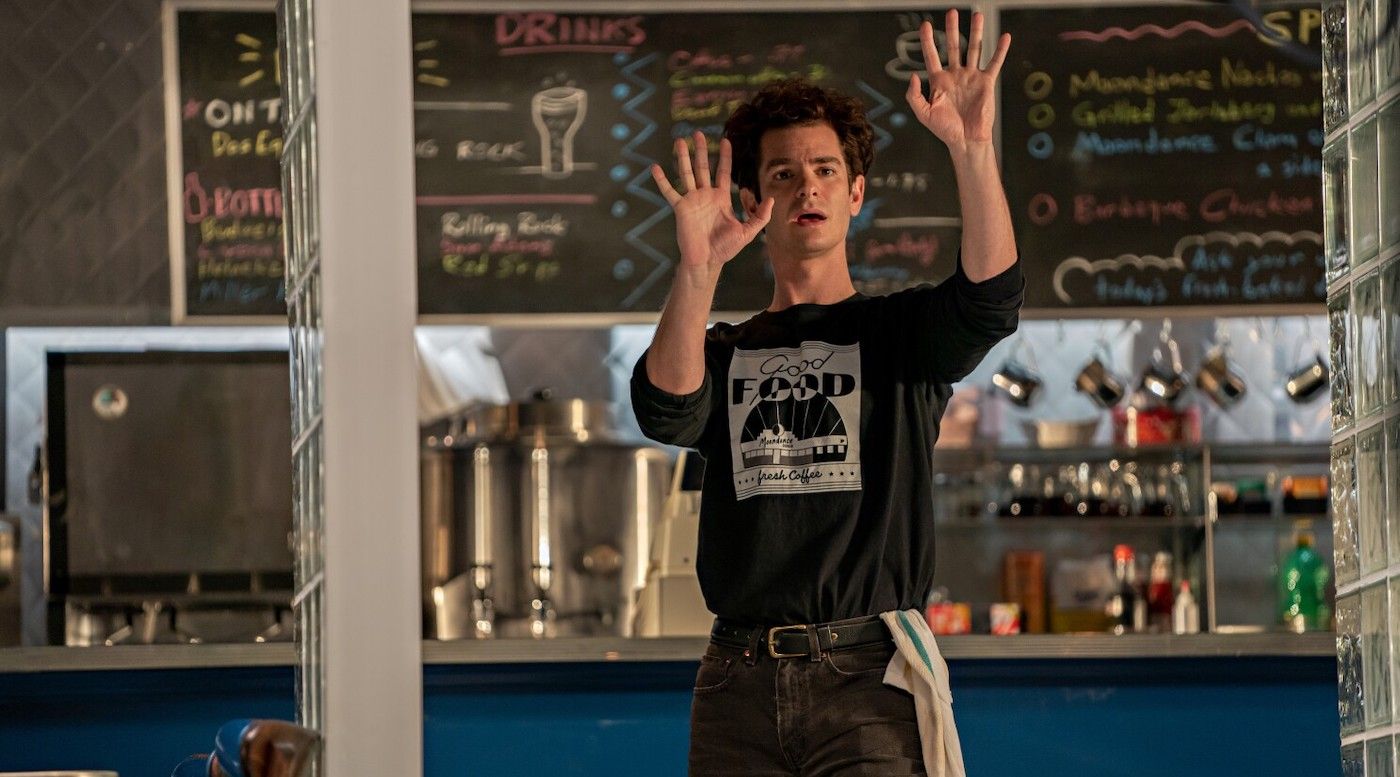Turning 30 is a big deal for pretty much everyone. In the past year, two very different movies had a lot to say about how that feels for an artist, as well as how it feels for someone living in “unprecedented times”. Bo Burnham’s Netflix musical comedy special, Inside, and the Lin-Manuel Miranda-directed movie musical, Tick, Tick… Boom! both delve into the struggles and existential crises surrounding turning 30. These pieces share a uniquely common thread that connects two artists from very different decades. But, the conclusions they come to are also very different.
In May 2021, Bo Burnham’s Inside dropped on Netflix and made waves all over the internet. A musical comedy special about someone trapped inside during the COVID lockdown had a lot of appeal for the many people who were experiencing the same thing. In this special, Burnham discusses the difficulty of feeling trapped in his apartment during the pandemic and trying to continue making his art while turning 30. Six months later, the film adaptation of Jonathan Larson’s lesser-known musical, Tick, Tick… Boom! premiered in theaters and on Netflix. The film centers around Larson’s (Andrew Garfield) struggle to give up on his art as he approaches 30 or keep working towards it. He’s a musical theater composer living in 1990 when the AIDS epidemic was sweeping the world. His friends are contracting the disease and dying all around him. While Larson, thankfully, doesn’t have it, it doesn’t mean that he isn’t being personally affected.
Burnham and Larson are both struggling with being able to continue making their art during difficult times worldwide. Both are grappling with these same feelings on the same milestone birthday, and they deal with their relatable struggles by writing musicals about them. Both films have a major meta element since both pieces are about the pieces, themselves, being written. They discuss artists struggling to make their art, but their discussion of the struggle, itself, becomes the art. One of the best things about artists expressing a feeling through their work is the fact that it can make those who experience it too understand that they aren’t alone in what they feel. These pieces are both extremely successful in their goals to do that. They each speak to a generation going through a shared struggle that often feels painfully individual.
Inside features a song called “30” in which Burnham discusses his upcoming 30th birthday. He ends the song by saying “It's 2020, and I'm 30, I'll do another ten/ 2030, I'll be 40 and kill myself then.” In the Tick, Tick… Boom! song, “30/90” Larson laments, “Not just another birthday, it's 30/90/ Why can't you stay 29?/Hell, you still feel like you're 22/Turn 30, 1990/ Bang! You're dead, what can you do?” The fear of getting older without accomplishing what you want has always existed. It’s a pillar of mortality. Tick, Tick… Boom! pays a lot of attention to the time during which it’s taking place. Larson often references the ‘90s in the piece. 30/90 is not only about the fact that he’s turning 30, but that he’s turning 30 in 1990, indicating that his experience feels specific to the time. Inside takes this same feeling of generational dread and re-contextualizes it for the millennial age. It connects these two times through a similar experience.
One thing that’s vital in re-contextualizing the predicament of folks turning 30 in 1990 to be relevant for millennials is the prevalence and importance of the internet and social media. A major theme throughout Inside is the role that social media and the internet are playing in the strange circumstances of the moment. Social media has a major effect on most people, and it really shines a new light on that dread about aging. Now, not only is the feeling of growing older and not accomplishing what you wanted to accomplish weighing on you, but it feels as though everyone you know is judging you for it. There’s a notion that no matter what you do (or don’t do), there’s a spotlight on you. For obvious reasons, this makes the pressure worse.
While Burnham deals with COVID-19 by locking himself inside and diving into these artistic interests, it’s Larson’s focus on his pursuit of greatness and artistic expression that keeps the truth about the pandemic going on around him out of his perspective. It isn’t until a close friend directly confronts Larson and tells him that he has AIDS that Larson comes to grips with the pandemic he’s been avoiding all along. Burnham had to confine himself to a few rooms to address the COVID-19 pandemic, but for Larson, escaping that artistic solitude and facing the AIDS pandemic head-on is what helped him create arguably his greatest work Though the films’ concerns and methods of working through them are similar, the conclusions that the two films come to are very different. Larson pushes through the fear. He perseveres and comes out hopeful on the other side. Burnham ends in a place of hopelessness and despair about the future.
In the end, Jonathan Larson was right to persist. He was right to keep going. He went on to accomplish what he set out to do. Any self-doubt and worry that occurred in the interim could’ve been easily chalked up to normal growing pains. But, for Burnham, things turned out very differently. Burnham produced his project, of course. And, it was a major critical and commercial success with a 94% on Rotten Tomatoes. So, if the question is whether successful art was in Bo Burnham’s future, of course, it’s a resounding yes. But, Inside didn’t wrap up nearly as neatly or hopeful as Tick, Tick… Boom!
Tick, Tick… Boom!’s final song, "Louder Than Words", is a hopeful ballad. It’s mentioned that Larson wrote the song, because he had so many questions about life and that he’d spent the next chapter of his life’s work asking and ruminating on them. This song is presented along with a montage explaining what would happen to Larson in the future and the major success he’d find as an artist working in his chosen field. It’s a happy, hopeful, inspiring ending. One of the later songs in Inside says, “You say the ocean's rising; like I give a shit/You say the whole world's ending, honey, it already did” (which by no coincidence, but plenty of irony, became a viral TikTok sound.) Its message is as hopeless as it is uncertain. Inside’s final song, Any Day Now, has only one line that it repeats. It says, “It'll stop any day now (Any day now, any day now.)” There’s an unanswered question about what exactly the “it” in this song refers to. And, while it compares to Louder Than Words in acknowledging the unknown of the future, the feeling is far more ominous than hopeful.
The notion of finding something to be hopeful about in dark times is always welcome. But, it seems that what might be more relatable for folks right now is realistic hopelessness. The main difference between a semi-autobiographical piece of art being presented immediately and it being presented 30 years after it was made is that the natural, real-life sequel of one has yet to unfold. It will be interesting to see if Burnham will continue to find the artistic success he seeks and if he will come to have the same influence that Larson has had.




